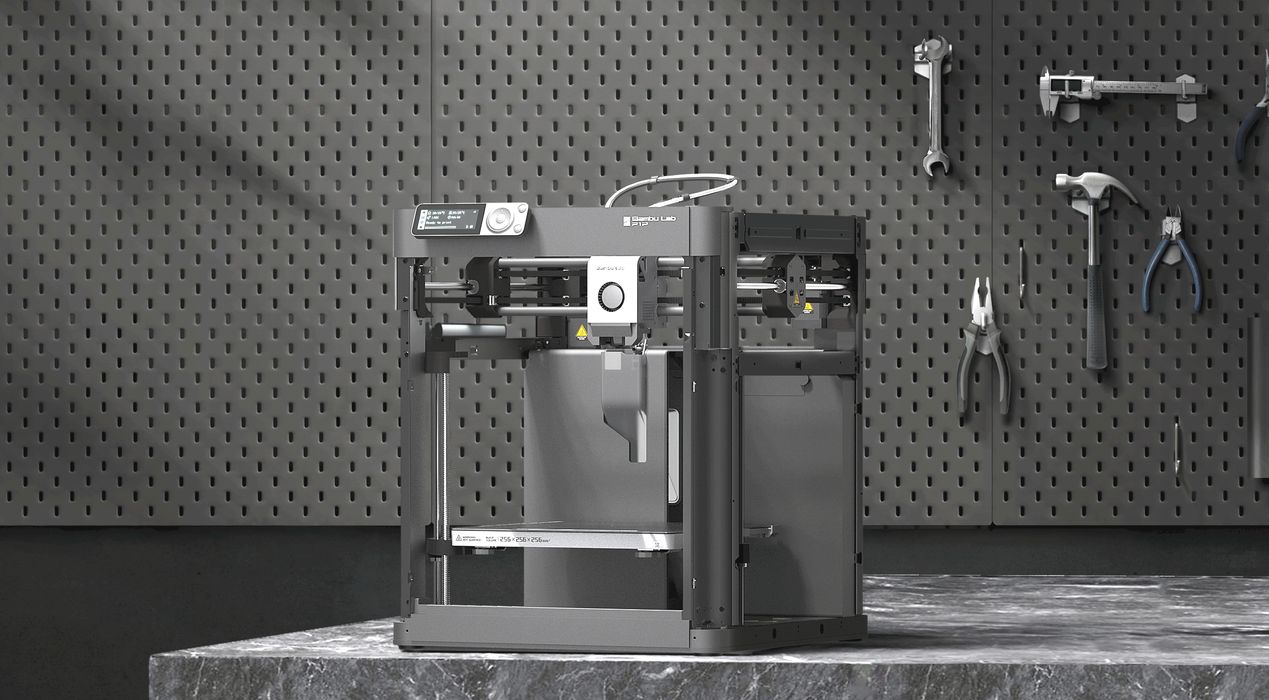
Something new appeared on Bambu Lab’s list of 3D printers: the P1S.
The company has dramatically shaken up the desktop FFF 3D printer market since their introduction of the the X1 over a year ago. That machine normalized high speed 3D printing and AI-powered quality control.
However, that machine was a bit out of the price range of many, so the company then followed up with the P1P, a slightly less featured device that had most of the good stuff from the X1, but at a lower price point.
Now we see the new P1S, but how is it different from the other models?
Bambu Lab P1S vs P1P
Essentially, the P1S is a slightly modified P1P, with a US$100 premium. It seems that Bambu Lab has tweaked the configuration to include a few items missing from the P1P, but added back to form a more complete and attractive system. In other words, it seems that the P1P fell short in a few features.
What’s been changed? While most of the features are identical (and also true with the much more expensive X1), here are the key features of the P1S as compared to the P1P:
- Plastic enclosure, as opposed to printable enclosure
- Closed loop control cooling fan system
- Activated carbon air filtration
- Premium toolhead cable with cable chain
- ABS and ASA full compatibility
And that’s it, there are no other differences between the P1S and the earlier P1P. If one were to examine these differences carefully, it’s pretty clear that Bambu Lab has tweaked the configuration to make it eminently feasible to 3D print ABS/ASA materials on the P1S, whereas they were somewhat challenging on the P1P.
Note that all Bambu Lab models have significantly useful features, including:
- CoreXY motion system
- High speed printing
- Compatible with Bambu Lab’s external Automatic Material System (AMS) for automated filament swaps
- Vibration compensation for quality high speed prints
- Direct drive extruder
- Automated calibration
- 300C nozzle temperature
Bambu Lab P1S vs X1
For reference, let’s compare the new P1S with the high end X1, which sells for US$500 more. Here’s what the X1 adds:
- Metal and glass enclosure
- Hardened steel nozzle for abrasive materials
- Higher build plate maximum temperature
- More extensive material compatibility, including abrasives and flexible
- Higher resolution camera
- LiDAR sensor for leveling and first layer quality control
- Door sensor
- Larger screen with touch control
- Onboard file storage
- Neural processing unit
That’s quite a bit more, justifying the higher price. This also shows how to make a decision between the P1S and the X1: Those using many different materials and requiring the highest possible print quality should consider the X1, whereas someone printing PLA and ABS/ASA should consider the P1S.
Note that if you’ve already received a P1P, it’s possible to upgrade it with a special upgrade kit from Bambu Lab. The kit includes fans, ducting, enclosure, cabling, etc., and is priced at US$191 — almost double the price difference between the P1P and P1S.
It may seem surprising that Bambu Lab suddenly released this slightly different 3D printer model, but it’s very likely their analysis of the market showed that more people would prefer a machine with P1S-style features. In other words, it’s a bit closer to X1 capability, but at a far lower price point.
The P1S should be an excellent choice for many, and it puts even greater pressure on competitors, many of which are still reacting to Bambu Lab’s products by developing their own high speed devices. However, only a few have hit the market so far, and now Bambu Lab is on their third machine of this type.
Via Bambu Lab
